We had an exciting day-trip planned! Being the first to awaken, I roused Lewis from slumber, showered, heated our breakfast in the room's microwave, and packed our food and juice in a tote bag. As we left the hotel, we looked up in the sky and saw a rainbow! So pretty. Since we were in Ireland, we presumed that it would lead to a pot of gold (as the legend says). Ha ha!
At Four Courts, we got on a westbound tram. It crossed the Seán Heuston Bridge, which is named for a Dubliner who participated as a rebel in the Easter Rising of 1916. Originally named King's Bridge, the cast-iron antique was built in 1827 but fully restored in 2003.
The Luas tram quietly deposited us at Heuston Railroad Station (pronounced like the Texas city of Houston). Resembling an Italian palazzo, the beautiful building opened in 1846 on land bought from Britain's Prime Minister, Lord Palmerston.
We entered and were wowed by the elegant Ticket Hall.
Unlike NYC, there were no homeless people huddled there, nor were there beggars in the bathrooms.
We were further impressed by the cleanliness of the lavatory, which surpassed any of the ones that we used at stations in Chicago, New York City, Westchester County, Boston, and Long Island. With contactless technology that surpassed America's wealthiest city, it used motion-sensors to activate urinals, toilets, soap dispensers, sink faucets, and hand dryers. Smartly, the dryers were attached to the faucets, so droplets fall into the sink and don't blow onto the floor or your shoes. We valued that cleverness.
We encountered a problem when we approached the Ticket Booth and discovered that we missed the train to Kilkenny, 10 minutes earlier. Accustomed to rail travel in the United Kingdom, Italy, and Germany, we expected to get aboard the next one in 20-30 minutes. Alas, Kilkenny only had four trains from Dublin per day! The next one departed in 2.5 hours. Argh! None of the travel blogs or tourism websites that we researched beforehand mentioned that important detail... so I will notify you now.
Nevertheless, we bought two All Day roundtrip tickets on Iarnród Éireann (Irish Rail) for a total of €46.40. FYI: tickets bought online in advance are cheaper, but you need an All Day type for flexibility.
Not to be discouraged, we had the clever notion of riding one of the trams all the way to its terminus and then returning to the station. We chose the Red Line...
...and we were fortunate to get the first front-facing seats, so we had a lovely view. With a delightful "clang clang" from its bell, the tram announced it departure. As we proceeded, we admired how greenways were installed around the urban tram tracks.
Mindful that we could relocate to Dublin for a better life, we were eager to see the outskirts of the capital, and its suburbs. Impressively, the tram sped over highways, ran along canals and pastures, zipped through intersections of major roads that were full of shopping centers, and skimmed past suburban row-houses. It seems like the best option for a commute.
Seen above and below, we really liked the scenery along the Grand Canal—full of swans, houseboats, waterside homes, and antique canal-locks that still work.
Maintaining its infrastructure, Dublin's locks allow boats to move uphill by forming a compartment that fills with water to elevate a boat to the next level.
The locks also ensure a gentle flow of water in the canals, and residents cross them as bridges or dive off them for swimming.
Stretching south for 13 kilometers, the route that we chose also showed us the tram yard and offices of the tram network. Seen below, the depot is in an area named Red Cow.
Its pristine condition bolstered our confidence in Irish society.
At the end-of-the line, we admired newly-constructed high-rise apartment buildings in the suburb of Tallaght in South Dublin. (It's first structure was Saint Maelruain's Monastery in 769). Unlike the greedy landlords of NYC who build towering monstrosities without caring about the lives of their overcharged tenants, each of the Irish high-rises contained restaurants, cafes, and shops in the ground-floor levels. We rarely see such consideration in NYC's overdevelopment.
The value of real estate is impressive. A two-level, three-bedroom row-house (with driveway) is priced at €250,000. Another that has front and rear gardens is priced at €295,000.
It was lovely to see communities that were planned to include movie theaters, restaurants, cheesemongers, eateries, coffeeshops, and dry cleaners. Unlike the miserly-sized balconies of NYC apartments (merely there with widths of 12-inches so the landlords and realtors can claim to have them)...
... the Irish balconies were big enough to hold tables, chairs, and plants.
At the last stop, we exited the tram, and a red-vested woman got aboard to sweep, clean, and disinfect it. A new tram driver was already there to enter the opposite-facing cab. The tram was ready to leave within merely three minutes. For New Yorkers like us, that seemed miraculous!
In overpriced NYC, its hugely-corrupt Metropolitan Transportation Authority allows subways to remain backlogged while lazy drivers are late for their trains because they went shopping or bought snacks. Unchanged for the last 14 years, passengers and lines of oncoming trains are delayed while waiting for slow-moving drivers to return from Kentucky Fried Chicken, McDonald's, or T.J. Max discount stores. No consequences happen to them. Then, to recapture their lost time, they sometimes bypass the next few stations, which insultingly neglects those delayed passengers (regardless of weather on the above-ground stations). It also disregards any customers who intended to get off at those stations. Videos, testimonials, and whistle-blowing editorials accumulate, but neither NYC nor the MTA fixes it. They don't care.
Therefore, we were thrilled to witness a properly-run transit system! Just the fact that Dublin has a tram network excited us, each day!
The tram moved so promptly and quickly that we had spare time to ride to Dublin's docks, at the eastern tip of the route. We disembarked at a tram stop named George's Dock. Built in 1821 and named for King George IV, it is a historical landmark. I photographed a canal that led to the Custom House.
We popped into the EPIC Center, which housed the Irish Emigration Museum. It is privately owned by an Irishman who was the former Chairman and CEO of Coca-Cola.
The 1840s saw an exodus of Irish citizens—mostly due to a four-year famine. When their economy worsened, Irish immigrants believed the luring promotions/advertisements from the USA and settled there. Sadly, the majority of Irish-American settlers suffered discrimination and hate-crimes.
*To see more of what I'm referring to, please use this link: https://halfwindsorfullthrottle.blogspot.com/2015/09/america-land-of-free.html
Despite huge Irish-American populations that remain in New York City, there is discriminatorily very little Irish heritage there. Americans notoriously slander Irish culture during their slovenly and drunken celebration of Saint Patrick’s Day.
Annually, 11.5 million tourists visit Dublin and witness Ireland’s prosperous society. Gone are the days of famine and poverty that compelled Irish immigrants to relocate to North America and endure low-income jobs with racism. Now, Ireland outclasses America’s profitability, and barely any Irish citizens want to relocate to the USA.
Riding back to Heuston, Lewis and I entered the station.
Travelers congregated around the Butler's Cocoa & Coffee kiosk and the Jump Juice kiosk.
We approached a sleek train that was going to Kilkenny.
Such modern decencies of travel are unseen in New York, which is decades behind other global cities. This is what NY's trains for Amtrak, MetroNorth, and Long Island Railroad look like: filthy, outdated, slow, and substandard.
Operated by Irish Rail, trains are painted bright colors, and their efficient engines hummed powerfully at the platforms.
We noticed that the company's logo resembled the two-way arrows seen on British and Netherlandish railways that we rode on.
Responsibly, we saw the station patrolled by officers of the Garda. Every time we saw officers, they seemed happy.
Our tickets told us which part of the platform to use, and we got aboard a Second-Class coach that looked as handsome as the First-Class ones. We were thrilled.
Each compartment has motion-sensor glass doors that open automatically. Their purpose is to improve passenger comfort by keeping out dust and noise. American trains lack those simple modern conveniences. Please enjoy my quick video...
We located seats that weren't reserved (the digital signs were blank)...
...and we chose a configuration around a table. Few of America's short-distance trains have tables in their coaches because greedy railroads forgo conveniences for as many seats as they can fit. Also better than trains in New York State, the Irish one had e-charging sockets for every passenger.
The seats were covered handsomely with stitched leather. Unlike the stupidly-designed armrests on New York's MetroNorth and Long Island Railroad trains that ripped people's pants, the Irish ones can be raised—and aren't made of sticky rubber.
*Click on this image to make these headlines bigger/clearer...
In Ireland, the armrests can be raised for easy exits. Best of all: the seats were clean. It made for a dreamy 1.5-hour journey.
*To see typical unimproved-yet-overpriced commuter trains in New York, please use this link:
https://halfwindsorfullthrottle.blogspot.com/2019/02/metro-north-filth.html
Our train glided softly out of the station and zoomed ahead.
We travelled near another pair of Americans (who were enraptured with Ireland's infrastructure), a foursome of elderly Irish women who brought cakes and brandy to consume on their journey, and three young lads who were dressed to play football (only Americans call is soccer) in the Town of Kildare. The sun peaked through the clouds, and the day brightened.
Sitting at our table, we unpacked our breakfast and savored every mouthful. We shared a perfectly-crusted pork pie from Marks & Spencer, and we each had a Scotch Egg: a hardboiled egg wrapped with minced sausage and coated with breadcrumbs. M&S priced each Scotch Egg affordably at €1.00. We drank orange juice, and then munched on clementines that I peeled at our hotel room. Our meal looked like this...
Lewis napped, and I admired the pastural scenery: mountain ridges, horses running through meadows, dairy farms, allotment gardens, sheep and lambs resting on the grass, streams, picturesque villages, and ancient churches with freestanding medieval towers.
Dating back to 1500 BC, the Kings of Ireland have so much significance that they are imbedded in folklore. Initially, Ireland consisted of several kingdoms, and Gaelic clans were controlled by an elected chieftain (similar to the modern monarchy of Malaysia). Just like corporate acquisitions, some kings gained sovereignty of the entire island of Ireland. Each was crowned at an ancient stone monolith on the Hill of Tara, 40 kilometers from Dublin.
The phallic-shaped stone was named “The Shouting Stone” because the kingly proclamations occurred there. Irish kings were believed to possess sacred qualities that they obtained from marriage or sex with a Sovereignty Goddess.
In the beginning, King Fir Bolg invaded Ireland with 5,000 troops and divided it into provinces for his five sons. However, four died within several years due to plague. The last brother ruled as the king for five years until he was killed by an usurper. Ruaidhri O’Conchobhair (Rory O’Connor) was crowned in Dublin as the last King of Ireland in 1166. His kingship ended in 1198 when the Anglo-Normans from England conquered the island. They built numerous castles to retain their new territories.
In 1198, King Henry II of England invaded the island and gave the parts that he controlled to his son, John, who was only 10-years-old. The next year, John ascended the Throne and remained the Lord of Ireland; that personal union brought Ireland and England under the control of the Crown.
In the Tudor era of the 1520s, England’s King Henry VIII wanted a role for his illegitimate son: Henry FitzRoy. He was intended to become the King of Ireland, but he died in 1536 at the age of 17. In 1541, the title “King of Ireland” was established by the Irish Parliament, at the behest of Henry VIII to ensure that whoever was the King of England would be the King of Ireland. He was the first monarch to have the title. England's Tudor Dynasty was excited about the Age of Exploration. During the reign of King Henry IV, the English colonized Ireland. In 1550, Queen Mary (a.k.a. Bloody Mary) established the plantation system there (and that progressed into Britain’s imperial policy).
Baronies were created, and the Sovereign of England and Ireland appointed barons as his regional administrators.
Within the County of Dublin, there are ten baronies that are still officially defined as regions and used for land registration and planning permissions. The largest barony is named Uppercross, and the smallest is Dublin itself.
In 1707, the Kingdoms of England and Scotland became the Kingdom of Great Britain. In 1801, the Kingdom of Ireland was merged with it, so it became the United Kingdom of Great Britain and Ireland.
After Ireland’s 1922 Revolution of Independence, it became a republic and its northern territory became a separate nation named Northern Ireland—remaining in the UK—so the kingdom was renamed the United Kingdom of Great Britain and Northern Ireland.
The train entered the County Kildare (Irish counties are not said as "Kildare County", and they are abbreviated as "Co Kildare"). It paused at the station in the Town of Kildare. Many people got off there. Founded by Saint Brigid in the 400s, it retains its Celtic aura and remains a regional hub. It looks like this...
Entering the train, a gaggle of college girls found seats in our coach, and they gushed with Gaelic enthusiasm to visit Kilkenny. Shortly, the train accelerated gracefully (which is unlike the back-and-forth clanking that Americans trains do when they jerkingly move ahead). I was pouring juice, and nothing spilled. Ah, lovely infrastructure and superior technology are nice!
After awhile, the train arrived in Southeast Ireland and entered County Kilkenny. This is its coat of arms.
It stopped at the City of Kilkenny, and its coat of arms appropriately features a castle.
Kilkenny Castle was voted as a Top Ten Visitor Attraction in Ireland, so we were thrilled to see it.
Before choosing Kilkenny, Lewis and I researched 10 castles that were easily reachable by train from Dublin. (Most Irish castles necessitate rental cars or an all-day train ride to get to them). Some were called "castles" but they were merely 19th-century homes with veneers built to resemble castles. Others were restyled so much that they lost their fortress attributes... and their heritage. Built in the 12th-century, Kilkea Castle appealed to us. Seen below, it was a hotel, so we envisioned an overnight stay with a fancy dinner, followed by breakfast in the castle, local sights, and teatime.
Alas, it was fully-booked throughout February. So, Fate steered us to Kilkenny Castle, seen below.
It's a gem: a national treasure. We recommend it... especially since its within walking distance of the train station.
Our embarkation point was Macdonagh Station. However, a lack of signs caused tourists to zigzag aimlessly from the station (on the top of a hill), through a shopping concourse, around a bowling alley, and downhill to a traffic intersection.
As experienced travelers, Lewis and I knew to go where we saw the most pedestrians. We got to the center of town before the other hapless visitors.
As a medieval "city", it has deep roots to churches and monasteries that were built by Norman settlers in the 1190s and 1200s. Its winding lanes are collectively nicknamed Medieval Mile, and they are brimming with eateries and cozy shops that sell pottery, crafts, artisanal food, and handmade jewelry. Here are our photos...
Crossing Saint John's Bridge (first built in 1210 and redone in 1910), we saw the town's formidable castle on a hill overlooking a curve in the River Nore. The view looked like this...
The castle guarded the river for 900 years. The scene reminded us of visiting Windsor Castle in England, which was constructed high on a hill overlooking a strategic curve in the River Thames. *To see our exploration of that inhabited castle, please use this link: https://halfwindsorfullthrottle.blogspot.com/2021/10/our-trip-to-london-uk-part-4-windsor.html
From the bridge, we continued on Rose Inn Street, which curved around and presented us with a striking view of the front of the castle. Two imposing towers stood thickly and impenetrably on either side of the gothic gateway. The aura of the original 12th-century fortress was palpable.
In the 1100s, the site was first occupied by a wooden castle, square-shaped with four towers. The stone castle appeared in 1260, and three of its original towers survive!
During the Norman Invasion, the powerful Butler Family of Ormonde arrived in Ireland from England. (Previously, in 1099, William the Conquerer led the Norman Invasion from his land in Normandy, France into England, where he subjugated that kingdom). Originally, the family surname was Walter. In recognition of their efforts, the new king of England granted them a hereditary title "Butler (Cup-Bearer) of Ireland". It was so important that they forever changed their surname to Butler. Butlers of that era served as Archbishop of Canterbury and Lord Chancellor of England. In 1328, the family was elevated to the peerage as Earl of Ormonde by King Edward III (a.k.a. Edward of Windsor because he was born at Windsor Castle).
In 1391, James Butler, the third Earl of Ormonde, bought the castle and became ruler of the region. The next four heirs were born in the castle. The Butler Dynasty lasted for centuries. By 1488, the seventh earl had seats in the Irish and English Parliaments, owned 72 manors, and was one of the richest men in the realm. In 1509, he was appointed as the Lord Chamberlain to Catherine of Aragon when she was crowned as Queen of England. In 1642, they were promoted to the noble rank of Marquis (spelled as Marquess in Ireland and Britain). The family's coat of arms from that era is seen throughout the castle.
In 1454, Lady Margaret Butler was born in the castle. She married Sir William Boleyn and was the grandmother to Anne Boleyn: the scandalous and tragic second wife of England's King Henry VIII. Anne's adultery sparked England's cataclysmic break-away from the Roman Catholic Church, and the Church of England was formed. Her plan backfired, and her husband condemned her to be executed in the Tower of London.
For 600 years, the Butlers inhabited the castle and remained loyal to the British Crown. When the megalomaniac, Oliver Cromwell usurped power in England, he assassinated the king, outlawed Christmas, and led horrid sieges against Ireland. The attacks on Kilkenny destroyed the south wall of the castle. Fleeing the siege, the Butlers lived in exile on the continent. In 1680, the monarchy was restored, and the Butlers returned. King Charles II rewarded their valor—despite the defeat—with a dukedom. (In 1758, the last Duke of Ormonde died childless, so the title became extinct, but relatives retained the marquessate).
Yet, living in the castle was again challenged during the Williamite War between James II and William of Orange from the Netherlands. The Butlers supported William, so James evicted them. He resided there in 1689. Eventually, he lost the Battle of the Boyne, and the Butlers returned to their home.
By 1901, their staff at the castle included a butler, housekeeper, cook, two footmen, three ladies maids, handyman, groundskeeper, three housemaids, two dairymaids, kitchen maid, nurse, and scullery maid. In 1935, the family abandoned their ancestral castle and lived in the dower house (seen below) where any dowager marchioness was supposed to reside after her husband died.
In 1949, the capable marquess died and was succeeded by his feeble-minded brother, Arthur. Nothing was done to resuscitate the estate, and it worsened in disrepair. In 1967, he sold Kilkenny Castle to the People of Ireland for £50... and was happy to unload it.
It is managed by the Office of Public Works. After a thorough 20-year restoration, it was open for tours. It recently underwent another admirable refurbishment. (In fact, that night, we saw a TV show about that amazing refurbishment, and it won awards from the government).
Together, Lewis and I inhaled brisk air, and set forth to the main gate.
Please enjoy Lewis' panoramic video of the facade.
With the West Tower on our left, we entered through the main entrance. We looked up at the crenelated ramparts and imagined soldiers with iron helmets, chainmail, and halberds (or crossbows) guarding the walls. We spent €16 for two self-guided tours. (Guided ones are available via preplanned online reservations. But since the only trains back to Dublin departed at 3:30 and 7:30, we could not wait for the next guided tour).
First, we went into the Muniments Room, which showcased an exhibit titled "Wallpaper Archive". In 2020, 250 examples of historic wallpaper—spanning three centuries—were donated to the Office of Public Works, and the government decided to display them at Kilkenny Castle. They were submitted from every part of the island: home owners, castle conversation workers, architects, historians, and builders who found them.
Seen above, we entered the Chinese Withdrawing Room. Its original Chinoiserie decor from the 1810s was restored. The walls are covered with hand-painted wallpaper that depicts scenes from ancient China. The room was intended for after-dinner conversation amongst ladies, who were obligated to vacate the dinning room after dinnertime. That was the discriminatory etiquette of the Victorian and Edwardian eras.
From there, we proceeded to the formal dining room, which ensured that meals in the castle occurred stylishly.
The wallpaper was hand-blocked to achieve its depth of color; it is a technique that evolved since the 1820s. I admired the tracery ceiling, and we photographed the red/green stained glass windows that featured patterns of roses.
In 1860, the room was converted into a billiards room, and an upstairs chamber was repurposed as the new dining room.
Due the family's overspending and bankruptcy, an auction occurred at the castle in the 1920s. Nearly everything was sold. Most of the furnishing that are now in the castle were donated by Irish families and institutions. One of the few original items is a large marble table in the Entrance Hall that was too heavy to move. Made of one giant slab of stone, the table remains... with dents and cracks that signify untold history.
Moving onward, we found ourselves in the Entrance Hall, which has a Gothic style. The floor is tiled with white and black stones in a checkered pattern that were quarried in Kilkenny. A massively beautifully staircase snakes upward along three sides of the room. It leads to the North Tower. But at that doorway, it branches off again because the floors of the adjoining wing are at a different height. Due to a battle in the 17th-century, that wing was rebuilt, but the tower remained untouched.
The taxidermy on the walls was donated to castle to replicate animal "trophy" heads that the Butlers either hunted or found. One was unearthed in a bog that was proven to be a prehistoric elk. It educated Irish scientists who previously mistook the female skeletons (without antlers) for ancient horses.
In the 1600s, the Entrance Hall was open to the outside because it was a porte-cochère that let carriages and coaches into the courtyard, but it was enclosed in the 1860s.
We climbed up the mahogany staircase, and our palms enjoyed the smooth, lustrous banister. We ogled the cut-out spaces of the banister, which were carved in the 1800s.
In the North Tower, the Tapestry Room exudes a medieval flair. The 12th-century walls are two meters thick, so you can see that they were built to withstand catapults and cannonballs. The deep spaces around the windows are paneled with dark wood, and they create cozy nooks. The ceiling is shaped like a keyhole because a square tower was added on the round tower during the 1400s.
In the 1600s, the walls were ornamented with embossed and gilded leather hangings. In that era, the ninth earl ruled the land, and this is his portrait.
Now, only one leather chair remains as an example of that dramatic craftsmanship.
The centerpieces are two old tapestries woven in 1616 by Peter Paul Reubens that depict The Story of Decius Mus, an ancient Roman consul-general who sacrificed himself to ensure victory.
Recently, the castle sent those priceless tapestries to the Kingdom of Spain to be restored at The Royal Tapestry Workshop in Madrid. The results are awe-inspiring!
The room's French silk wallpaper was recreated, based on a scrap of fabric that was found behind some skirting boards. That's amazing.
*To see our awesome trip to Madrid, Spain, please use this link: https://halfwindsorfullthrottle.blogspot.com/2023/11/our-trip-to-madrid-spain-part-1-of-7.html
The view from the old tower overlooks the river—which was a commanding viewpoint in former centuries.
Ascending more stairs...
...we arrived in an oval-shaped Ante Room, which was colored with lively yellow hues. It was where guests waited "to be announced" to the family before entering.
The room has its shape because it was originally a stairwell that was converted into a stack of rooms.
The library is a long room with walls draped in yellow silk brocade. Its silk wall coverings were reproduced accurately by a manufacturer named Prelle, in Lyons, France. Researchers at the castle uncovered receipts for the carpet, and thankfully, the company still exists, so it remade the carpet with authentic designs.
In 1645, James Butler, the first Duke of Ormonde...
...hosted a papal nuncio named Giovanni Battista Rinuccini who represented the Pope regarding the Irish Confederate Wars. The duke had that honor because of his significance as Lord Lieutenant of Ireland, Lord High Steward of England, and Chancellor of Oxford University.
Born in Florence, Rinuccini lived in Kilkenny for four years.
He sought to enforce papal wishes that property be restored to the Catholic Church, and he brought 2,800 pistols, 6,000 swords, 2,500 muskets, and tons of gunpowder. To maintain control, he and his retinue of 26 Italians dispensed their funds and weaponry, instead of merely giving them to the Confederates. He dreamed of a Catholic-controlled island, as a base to re-establish Catholicism in England. He tried excommunicating Irish leaders who wanted a peace treaty, but Irish bishops and priests were split. In 1649, Oliver Cromwell invaded Ireland and repressed Catholicism, so Rinuccini fled back to Rome... and died four years later.
We reached the West Tower and ascended cantilevered stairs made of Irish Wicklow granite. They really evoke a castle-like experience.
The suite of rooms on the second level were originally a long art gallery. At that time, the Butler family owned 500 paintings, which was the largest collection in Ireland. In subsequent centuries, the long space was remade into a wing of bedrooms, and a new gallery was constructed as its own wing.
Going further into the castle, we saw unfurnished rooms that are used to display the family's ancestry, accomplishments, and connections to royal lineage. One room featured an exhibit titled "Merchants - Magnates - Courtiers", which opened in July 2022. Its curator traced the Butler family's effects on Kilkenny's medieval merchants to make them the wealthiest level of society. They were the "springboard" of Kilkenny's financial, architectural, and social elevation. When the family was ennobled as earls, their courtly connections created international advantages for mercantile trade. As patrons of the arts, they travelled across Europe and brought back masterpieces. They hobnobbed with Cardinal Wolsey in England, as well as Queen Elizabeth I (a.k.a. the Virgin Queen).
The next chamber contained maps of the Kilkenny Estate, drawn in 1810. Maps and Ireland share a fun historical connection. When England first tried to invade the island, Irish monarchs and nobles bribed their map-makers to create false ones. Instead of waging war, the Irish gentry saved money and merely misguided the invaders—and wasted their money. In the 1500s, after King Henry VIII's "Dissolution of the Monasteries", newly available lands sparked an interest in making maps of everyone's properties. The ones that decorated that chamber clearly delineated the 18th earl's lands in various parts of Ireland. That earl, Walter Butler, was born in the castle and gave employment to dozens of surveyors, cartographers, and lawyers. (His horticultural interests also employed hundreds of landscape artists, farmers, gardeners, agriculturists, and estate agents). As heir to the earldom, Walter also became the Earl of Ossory, Viscount of Thurles, and Baron of Lanthony. To maintain his overindulgent lifestyle, he sold his family's hereditary rights in Ireland to take portions of every shipment of wine. (It was granted by King Edward I in the 1280s).
His brother, James, became the next earl and also spent money extravagantly. As a fan of his overspending, King George VI (who also lived beyond his means) elevated him from an earl to being the first Marquess of Ormonde. Walter was schooled at Eton (across the river from Windsor Castle).
He married an affluent heiress, Anna Maria Price-Clarke, who was born in 1789.
Another room included an exhibit titled "Moments in Time: 1870 - 1970". Its walls were covered with black-and-white photos of five of the Marquesses of Ormonde. The last three let the castle become dilapidated while they socialized in England. It stood vacant and abandoned until it was sold to the citizenry.
A holdover from the Edwardian era, the Nursery remained full of antique children's toys.
Entering the Blue Bedroom was astounding because we saw photographs of its ruinous appearance before the government's restoration. Clearly, the family let the castle deteriorate while their fortunes were frittered away.
In 1904, King Edward VII and Queen Alexandra slept there. Knowing of her kleptomania, we wonder what shiny baubles or trinkets were stolen by the queen.
The "Lady of the House" used an adjoining room as her Private Sitting Room, where she met with her chef and housekeeper, wrote correspondence, and had private rendezvous.
Next, we saw the Chinese Bedroom, which connects to the Blue one via double-doors. Its wallpaper has a Chinese motif, and the furniture is evocative of the Qing Dynasty.
We descended via the Moorish Staircase, with has a fairytale appearance in an awkwardly-tight space.
The masonry is carved fancifully with vines, butterflies, frogs, and birds. Brass rods hold the carpet to each step. Wrought-iron chandeliers have an Art Nouveau appearance, with leafy vines upturned from each segment. (They hang at different heights to spread light on everything).
A skylight floods the stairs with light, and the crimson paint on the walls is invigorating. A historic photo demonstrates the "Before and After" improvements!
Pausing on the landing, I noticed a tiny window that gave viewers a chance to notice a tiny door (that seemed centuries-old) which provided access to one of the castle's original openings—perhaps for archers or lookouts.
A humungous room is the Picture Gallery Wing, and it's stunning to enter!
Built in the 1830s, it reminded us of Windsor Castle's Saint George's Hall. Just as we did there, we sat on a beautiful bench and admired everything.
Craning our necks to look up, we spotted gold-painted creature heads on the wooden ceiling beams. They seem like eavesdroppers.
Lewis noticed that women are painted on the sides of each support-beam that protrudes from the wall to uphold the ceiling.
A double-fireplace of white Cararra marble is a highlight.
Walking in a corridor underneath the castle, we saw one of the cast-iron boilers from the 19th-century that burned coal to heat the castle. The boiler was left for display, so visitors understand the labor-intensive chores that servants performed.
Farther on the left, Lewis noticed a temporary gallery about tapestries. It was named "The Ros Tapestry: A Tale Told in Thread". The gallery occupies several consecutive rooms that were originally the Butler's Pantry and servants' Task Rooms. Each room is filled with brightly-colorful modern tapestries. There are fifteen. Ireland seeks to keep the artistry alive for designing and weaving tapestries. The assortment tells the story of Ireland being ruled by a Celtic king but being settled by the Normans, who developed the port-city of Ros. The first tapestry was finished in 2002.
A sociable docent explained that various regions of Ireland amassed volunteers to sketch and weave separate tapestries that pertained to events that occurred in their area. Hundreds of volunteers—of all ages (teenagers to seniors) and careers—compiled their talents and teamwork to create astounding works of art. They met in people's homes, community centers, converted barns, and church undercrofts. The creations are really impressive! Nobody was afraid of using pastels.
Each tapestry is embroidered on Jacobean linen twill with woolen threads. It requires an hour to stitch one square-inch; several years are needed to complete a panel! Please enjoy Lewis' panoramic video of one of them...
The tapestry below seems to include effeminate gay men with fey attributes. Nice.
The docent said that the final tapestry is being woven in Kilkenny, so that is why the collection is being displayed in the town... and the historic castle was the obvious place to hang them. We were glad to witness such human talent (and there was no additional cost for that Special Exhibit).
At the end of the corridor, we smelled the aroma of baked goods and coffee. Under one of the round towers at the edge of the castle, a Cafe & Tearoom provides homemade goodies and refreshments. The circular room was previously the castle's kitchen, and its iron stoves, copper pans dangling on the curved walls, and large windows prove it.
I was tempted to buy something, but Lewis reminded me of our lunch plans in the historic town. We exited the castle and walked around its grassy landscape.
The parklike woodlands stretch behind the castle for 21 hectares. Entrance is free to everyone, as are the formal gardens located before the castle.
Across the street from the entrance is the Kilkenny Design Centre, and it's a souvenir gift shop. Thankfully, its exterior retains is historic roots, so it doesn't seem touristy. It is advertised as selling "Items that you won't see anywhere else in Ireland".
We peeked inside, but the Christmas ornaments, hats, coffee mugs, and T-shirts didn't evoke Irish craftsmanship. Instead, I patted my new Irish scarf and remained grateful for my perfect memento.
During previous online research, I chose our lunch destination as Ristorante Rinuccini (named for that papal nuncio who lived for four years amongst the people of Kilkenny and loved fine food). It was literally across from the castle.
In the USA, that usually connotes overpriced-yet-cheaply-made food from greedy owners trying to fleece money from tourists. In Ireland, we consistently saw that eateries near tourist landmarks were upstanding and served quality menus.
The family-owned Italian restaurant occupies a stone-built townhouse. It opened in 1989, when Antonio Cavaliere immigrated to Ireland from Lazio, Italy at 15-years-old. He apprenticed in Dublin at Quo Vadis with a classically-trained chef, Bernardino Gentile. It was the most influential Italian eatery on the island. There, he married his wife, Marion Power, who was the restaurant manager. Together, they moved to Kilkenny to have their own establishment. He was chosen to be a member of Good Food Ireland because of his steadfast commitment for sourcing high-quality local Irish ingredients.
Last year, the restaurant received another Michelin Plate status (a.k.a. L'Assiette). Michelin supported its culinary talent since 1994.
Before entering, Lewis paused to peruse the Seasonal Menu by the front door. Our presence lured another couple to decide to eat there, too. The charming restaurant has a glass-enclosed vestibule with a gurgling fountain and 2 tables-for-two. Cozy!
We preferred to sit in the main dining room, seen below. The owner proudly showed me the rear dining room and the second-level one. Evidently, it's a popular place that is often full! Commendably, all of the tables in those rooms were already laid with silverware and glassware, and they had flower vases and candles—ready to go.
Ensconced in a corner of the main room, we admired its wood detailing, and we liked the curvy lamp on our table. Please watch Lewis' panoramic view of the interior...
We were impressed by their fair-priced Lunch Menu: 2 courses for €28 or 3 for €35.50. Despite the affordability, meals prepared by their kitchen are "fit for a king". (Try finding this at your local "tourist attraction" in the USA).
Our waiter immigrated from Italy, two years ago. He loves the area, his job, his car commute, and the food culture. He poured tap water into our goblets and put the carafe on a porcelain coaster. An Irish waitress assisted him to give us slices of oven-fresh bread and a ramekin of creamy-fresh Irish butter. Our waiter seemed enchanted to hear about our travels through Italy, last February. We regaled him with tales of exploring Milan, immersing ourselves in Florence, adventuring through Rome, and transitioning through an "international border" to Vatican City. Astonished that two Americans accomplished so much authentic food tastings (we never crave Kentucky Fried Chicken, Starbucks, or McDonald's), he almost applauded. From then on, we were a trio of friends.
We decided to have two-course lunches. Their homemade soups seemed tasty, but I opted to start with fritters of freshly-caught calamari, served with courgettes and anchovy aioli.
Lewis chose seared Kilmore Quay scallops, with slivers of prosciutto, and white wine sauce accented with garlic and lemon.
*Seen below, Kilmore is a fishing village in County Wexford with a population of 380.
The waiter inquired if we wanted wine with our lunch. As vacationers, it's fun to imbibe wine at midday... and when eating Italian food, it is customary. (Even as a teenager, I considered a portion of wine as part of my meal—alongside vegetables, starch, and protein). With 12,000 bottles in their wine cellar (a true cellar), Rinuccini is proud of its rapport with Italy's finest vineyards. Lewis selected a glass of Trebbiano from Abruzzo, and I sipped a glass of Gavi from the Piedmont region.
Aware of their handmade pasta (we love that), we paid extra to get a portion of fusilli with frutti di mare from Kilmore Quay. It was superb! Astutely, our waiter split the portion onto two plates, and presented us with shiny spoons (to scoop up the sauce). Familiar with Italian dining, we smartly used our bread to soak up the sauce for eating.
While we awaited our main courses, we overheard a trio of Irish locals at a nearby table. The man spoke robustly and seemed connected to the Catholic dioceses. The two women seemed to be gossips, who were eager to tattletale on the laity and the clergy of their church, and who were thankful for the free (high-class) meal. We heard the women quibble about their new priest being too "liberal", "superior", and "distant". The man said that their tattling was "a revelation", and he would do something with the bishop. Lewis and I smiled; some things don't change... even in small villages. Meanwhile, other customers spoke in hushed tones and seemed enthusiastic with their food.
A waitress crumbed our tablecloth and replaced our empty carafe with a full one. My main course consisted of free-range Irish chicken with mushrooms, pancetta, green beans, and wine sauce. Lewis ate roast Irish pork belly stuffed with garden-grown herbs and parmigiana cheese, served with creamy polenta topped with Marsala wine sauce.
We eschewed our waiter's offer for dessert because I remembered seeing a carrot cake in a shop window that still beckoned me. Lewis paid for our meal: €83.00. By then, the restaurant was full of lunching locals.
Full of happiness, we proceeded east to High Street. (High Street means "Main Street"). The town has a loop through its middle that is nicknamed Medieval Mile: it includes the two-lane High Street, the pedestrian-only road named Saint Kieran Street, and a dozen narrow alleys that retain their medieval dimensions. Our restaurant stood at the start of Kilkenny's Medieval Mile. Perfect!
Considering that Kilkenny's population is only 27,000, we were amazed that it invested in municipal street-sweepers for its sidewalks (just like Dublin did)... because none of the communities that Lewis and I visited in the USA invest in them. Our hearts melted with admiration at such standards.
Seen above, their (silent-electric) public buses look futurist, compared to the outdated, filthy ones in New York (with bad engines that rumble and roar through the streets as loud as jets).
Admiring the brightly-painted buildings (pink, pale blue, emerald green, yellow, and beige), we enjoyed a gentle stroll towards the Tholsel: a toll house from the 1700s that became the Village Hall. It resembled the enclosed public market that we saw in Florence.
Our sightseeing included The Harp Bar, Hellwolf Tattoo Studio, Kilkenny Book Studio, Pennyfeather Cafe, Kilkenny School of Yoga, Mahoney Pharmacy, and a Diesel boutique.
Seen below, we admired the most-famous medieval alley: Butterslip Lane.
Others included Chapel Lane, Collier's Lane, Poyntz Lane, and Saint Mary's Lane.
At the curve in the road where Parliament Street meets High Street (in front of an ice cream parlor named Scrumdiddly's), we turned around and walked back on Saint Kieran's Street, which is only for pedestrians. We liked that.
Last year, we watched a tourism video about Kilkenny on Youtube, and it raved about a pastry shop named CakeFace Patisserie. They opened a second location named Face2. We passed it, so we decided to pop inside and explore. The shop was empty, and the showcase seemed meagerly half-empty. The counter-girl saw us but walked away saying, "I'll be back in a moment." She didn't return for awhile. We took those things as signs to avoid the place. Perhaps it deteriorated since last year?
We sauntered past the Marble City Bar & Tea Rooms, Carrolls Irish Gifts, Rollercoaster Records (music store), a health food store, an "authentic Turkish barber", and Kieran O'Gorman Beauty Spa. Just before Indique Indian Restaurant, we followed a local lady up a set of stone stairs onto a narrow medieval lane named Saint Mary's Lane.
It wound its way behind several historic buildings and then bordered the stone wall of Saint Mary's Church. We didn't know it at the time (and there were no signs), but it had been converted into the Kilkenny Medieval Museum. Ironically, I learned about the museum from another tourism video online, but nobody mentioned that it was inside an old church. So, we missed the opportunity to spend €9 each to see its exhibits. (In fact, another woman saw us near it and offered to take our photo in front of it... but never mentioned that it was a museum).
We crossed the bridge over the River Nore, and I retraced our steps to locate that carrot cake! It was in the front window of Birdie's Bar & General Store. The counter-boy explained that the store sold homemade pastries that were prepared daily on-site. Everything in the store was from Ireland. Upstairs was a speakeasy bar, and the backyard had a walled garden. Checking the time on my Cartier wristwatch, I asked for our slice of cake to be boxed, so we could catch our train. The apron-wearing guy boxed it nicely and included napkins and disposable utensils. Lewis bought a bottle of pink lemonade. Our snacks cost €15.
As a castle-town, Kilkenny's preserved beauty reminded us of the one we explored in Nagoya, Japan. *To see that exploration of Inuyama Castle and its historic town, please use this link: https://halfwindsorfullthrottle.blogspot.com/2016/11/our-trip-to-japan-2-of-6.html
We returned uphill to the station and realized that the road was named Dublin Road! What a coincidence. That is also where the former City Walls ended, and a City Gate stood at that intersection. It was apropos for our departure to exit the way that centuries of inhabitants did.
At the station, we sat outside on a bench and munched on our cake and lemonade. Precisely on time, our train chugged into the station. However, unlike the one that delivered us to Kilkenny, that train was only two segments coupled back-to-back. We scurried aboard to gets seats. The train became full quickly. The engineer walked from one end of the train to the other and used that engine to drive away. We departed on-schedule, and the scenery was equally pretty.
We used the reliable trams to get back to our hotel. After freshening ourselves, the darkening sky signaled dinnertime. So, we wandered around the vicinity for a place to eat. After trekking five miles in Kilkenny, we liked the fact that our hotel's neighborhood was brimming with eateries for nourishment.
We tried dining at a Korean barbecue restaurant named Arisu, but the proprietress was rude and lofty (as if we should thank her for allowing us to pay her for food).
Around the corner, we noticed a cozy-sized Hong Kongese restaurant. It was across the street from the hotel. It focused on roast duck, which we love! We entered straightaway.
Named Bullet Duck & Dumplings, the small restaurant can seat 20 guests, and the kitchen is fronted by a glass-enclosed section where diners watch men slicing and de-boning their ducks.
The servers were chipper and attentive; ours was a young man from Malaysia, which is part of the Commonwealth. Lewis spoke fluent Cantonese with him and ordered our food: half of a roast Irish duck (with the bones removed—which is not done at most places), seafood dumplings flavored with squid ink, soup dumplings, and a roast-pork soup. The chef partners with a local butcher, M.K. Meats. Poultry is sourced from Cherry Valley Duck Farm and Silver Hill Ducks. Seafood comes from Wrights of Marino.
As a beverage, Lewis drank their homemade cold-brewed mango tea with strawberry-flavored boba (bubble tea). Uniquely, each boba was filled with strawberry nectar, so they squished in your mouth when you chewed them! :-)
Lewis conversed in Mandarin to a China-born waitress, and we learned that the restaurant's name was inspired by the brand of oven that was imported from China to roast their ducks and pork to perfection. Our entire dinner cost €67, and Lewis gave an optional gratuity of €10, which they were smiley about. At 9pm in February, the Irish air was at a balmy 50-degrees. Yay! (Back in NY, the temperature would dip below 35 by that time).
We sauntered north and joined the crowed at Bar 1661 again. It was less crowded than last time, yet candles flickered on every table, in preparation for the imminent rush of customers.
An older Irishman sat in the corner playing a steel guitar on his lap, while using a leg-activated drum, and a keyboard. He also played a harmonica! The talented gent had a fondness for American blues music, which amused us. The music was always upbeat, and the full-house of customers liked its groove.
We had perfect timing because immediately after we sat at the bar, a group of guys entered, and the bar got busy.
Brendan waved at us and flashed us a smile. Since he was busy with customers, another young lad made our drinks. From him, Lewis and I learned about poitín, which means "little pot".
Originating in Ireland in the first century AD, it is made from barley or potatoes and has a strong alcohol content. Equivalent to moonshine, the un-aged spirit has an earthy sweetness that blends very well with cocktails. Similar to absinthe, it was once illegal to brew it. In 2008, its recipe was conferred with Geographical Indicative Status.
We love trying local specialities, so Lewis chose a drink named Right to Fight: mezcal, Micil poitín (distilled with malted barley and bogbean botanicals), charred corn, and saffron. My libation was named Harvest: Roe & Company whiskey, poitín, bergamot, quince, citrus, and rose.
Once again, we were impressed with the sizable portion of the cocktails because "upscale or trendy" NYC bars greedily charge twice the price but give meager amounts, as seen below. (That's a ripoff).
Enthralled with the mixology, we ordered a "second round" of cocktails. For some reason, our bill for four drinks only totaled €26.50. Lewis left a gratuitous tip, and we waved goodbye to the guys behind the bar. We relished our hotel's prime location as we had a short walk from the bar.
Snuggling together in our room, we were thankful for our amazing experiences on the Emerald Isle.
Join us in the next part for a collegiate vibe and fancy dinner by using this link:
https://halfwindsorfullthrottle.blogspot.com/2023/02/our-trip-to-dublin-ireland-part-6-of-6.html
































































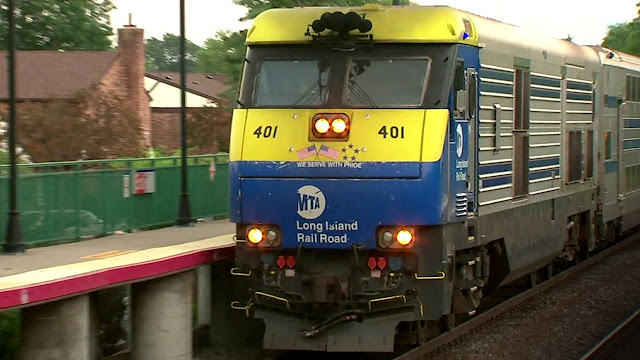









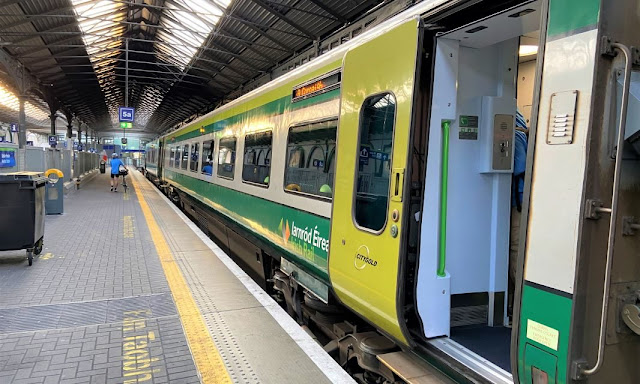





















_55r_-_Messer_and_Hungarian_shield.jpg)




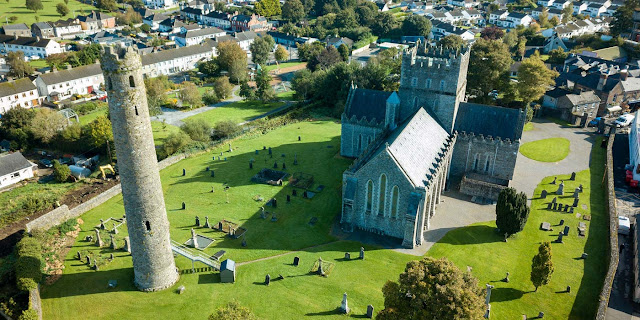
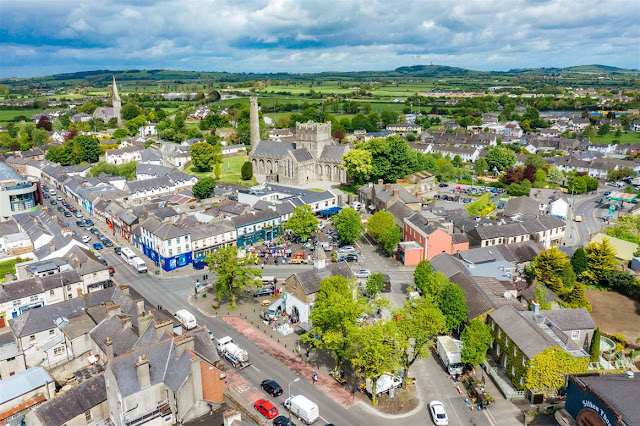




















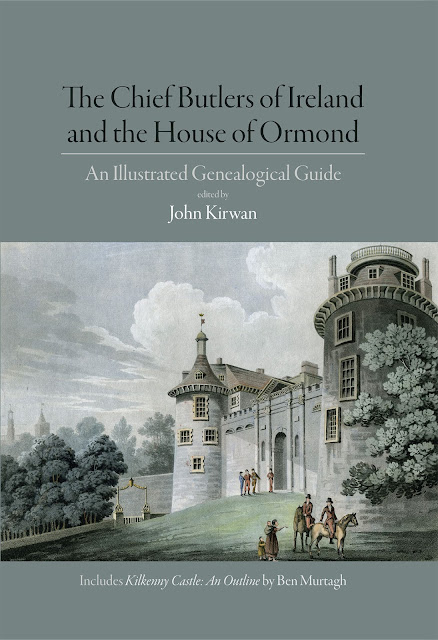







































_(style_of)_-_James_Butler_(1611%E2%80%931688),_1st_Duke_of_Ormonde,_in_Garter_Robes_-_1171123_-_National_Trust.jpg)









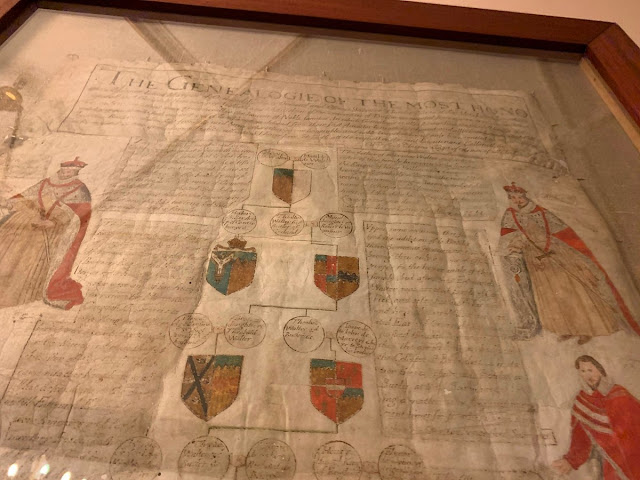
,by_Irish_school_of_the_1790s.jpg)






























































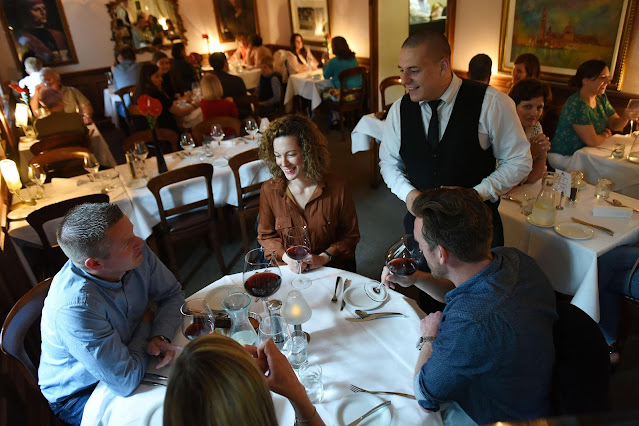




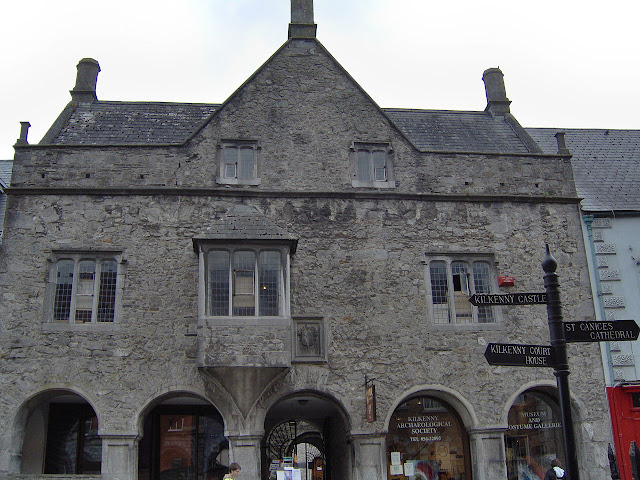








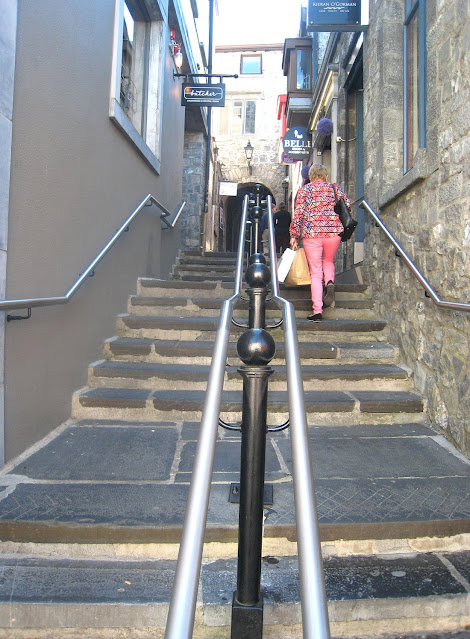

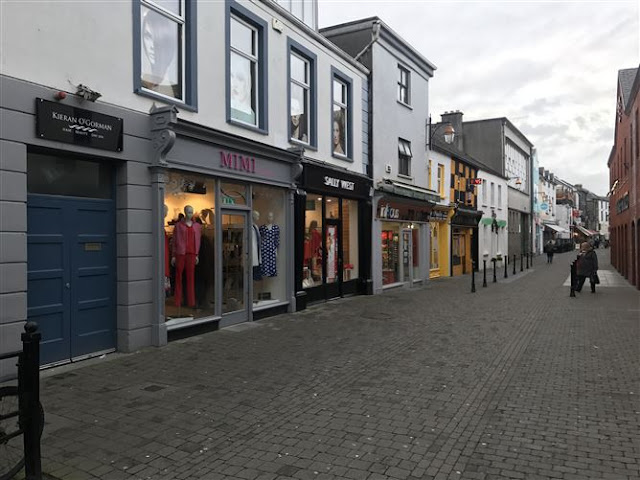


























_logo.png)







No comments:
Post a Comment
Don't be shy: leave your comments :)